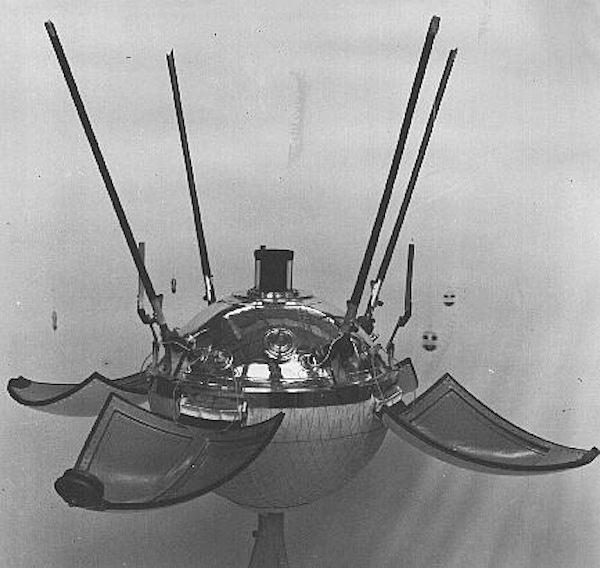LOST: Russian Spacecraft

Luna 9, an unmanned Soviet spacecraft from 1966. (Photo: NASA/Wikimedia)
The Canopus ST, a Russian satellite, had a lot going for it. It had been 10 years in development, Al-Jazeera reports, and was fitted with expensive cameras powerful enough to detect underwater submarines.
But the Canopus ST will never have the chance to live up to its full potential: after its launch into space on December 4, its booster rocket did not detach according to plan. Now, the satellite’s trajectory is off and, Al-Jazeera says, soon it will be dragged back into the Earth’s atmosphere and explode.
The Canopus ST is not the only recent loss in the space industry; private U.S. space companies have had their share of mishaps, too. Every explosion or failed delivery to the International Space Station is a reminder that it’s really hard to put anything in space and to know what will happen once these giant, expensive spacecraft are up there.
We’re also still looking for stuff we left lying around decades ago. In 1966, for instance, the Soviet Union successfully landed on the Moon for the first time—a triumph of science and exploration. For the first time, we on Earth had pictures taken from the Moon’s surface. The probe that sent them was never intended to come back to Earth. But we don’t even know where it is. As Space.com reports, researchers are trying to use a different satellite to locate it on the Moon—even though it’s “small, barely two pixels across in the best images.”
It’s there somewhere, though. We have to stop losing these things.
Bonus finds: A Mona Lisa under the Mona Lisa, possibly
Every day, we highlight one newly lost or found object, curiosity or wonder. Discover something unusual or amazing? Tell us about it! Send your finds to sarah.laskow@atlasobscura.com.









Follow us on Twitter to get the latest on the world's hidden wonders.
Like us on Facebook to get the latest on the world's hidden wonders.
Follow us on Twitter Like us on Facebook